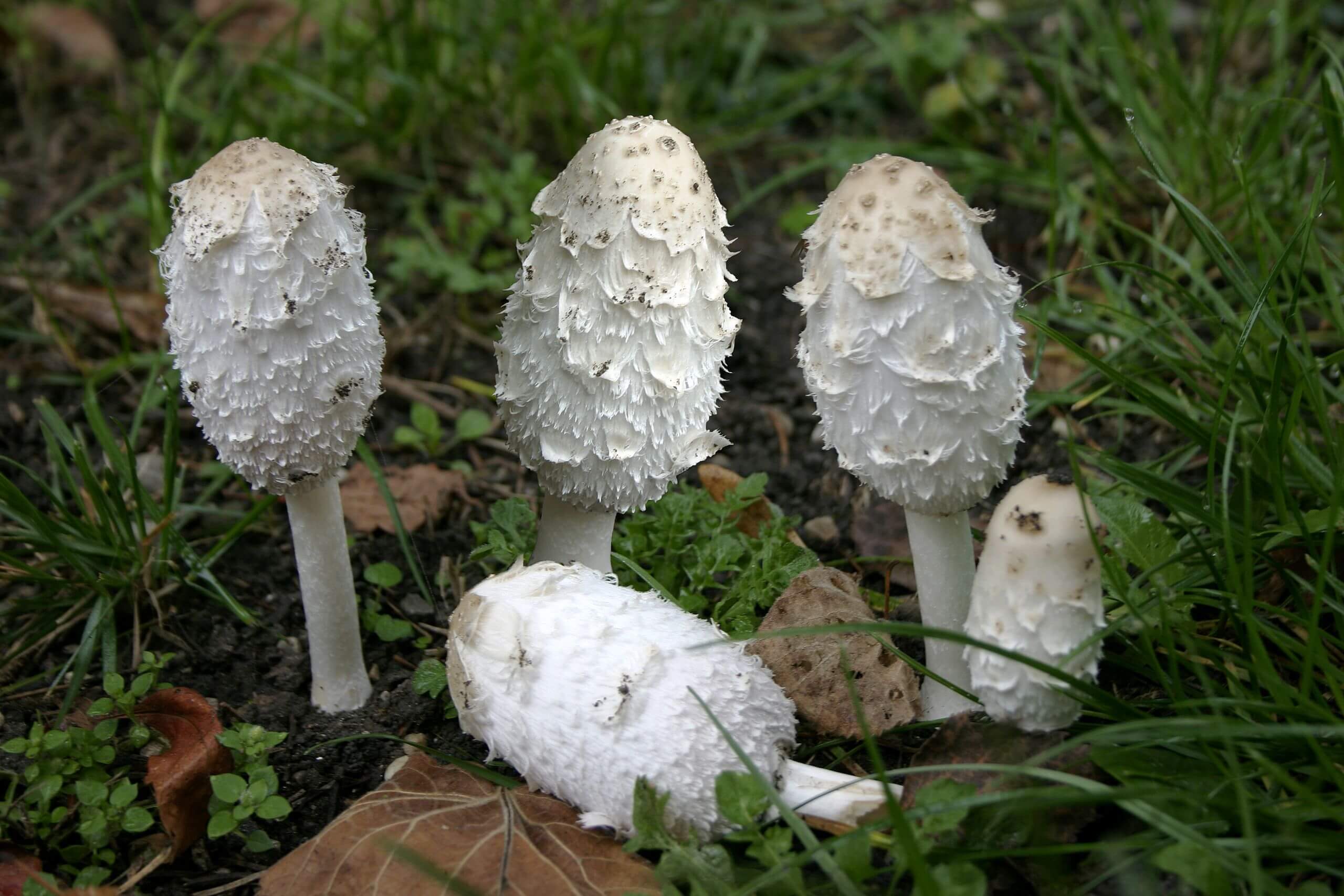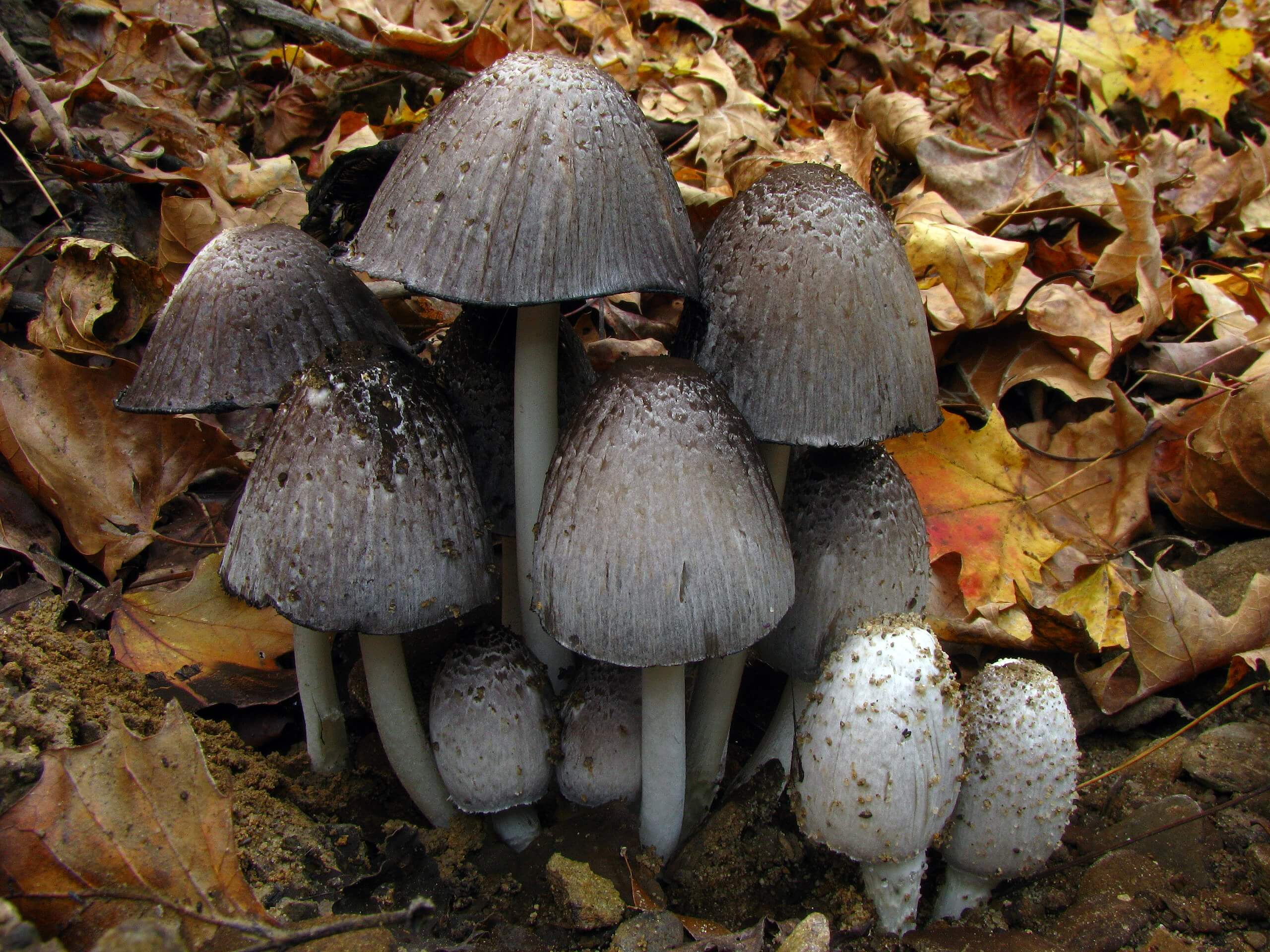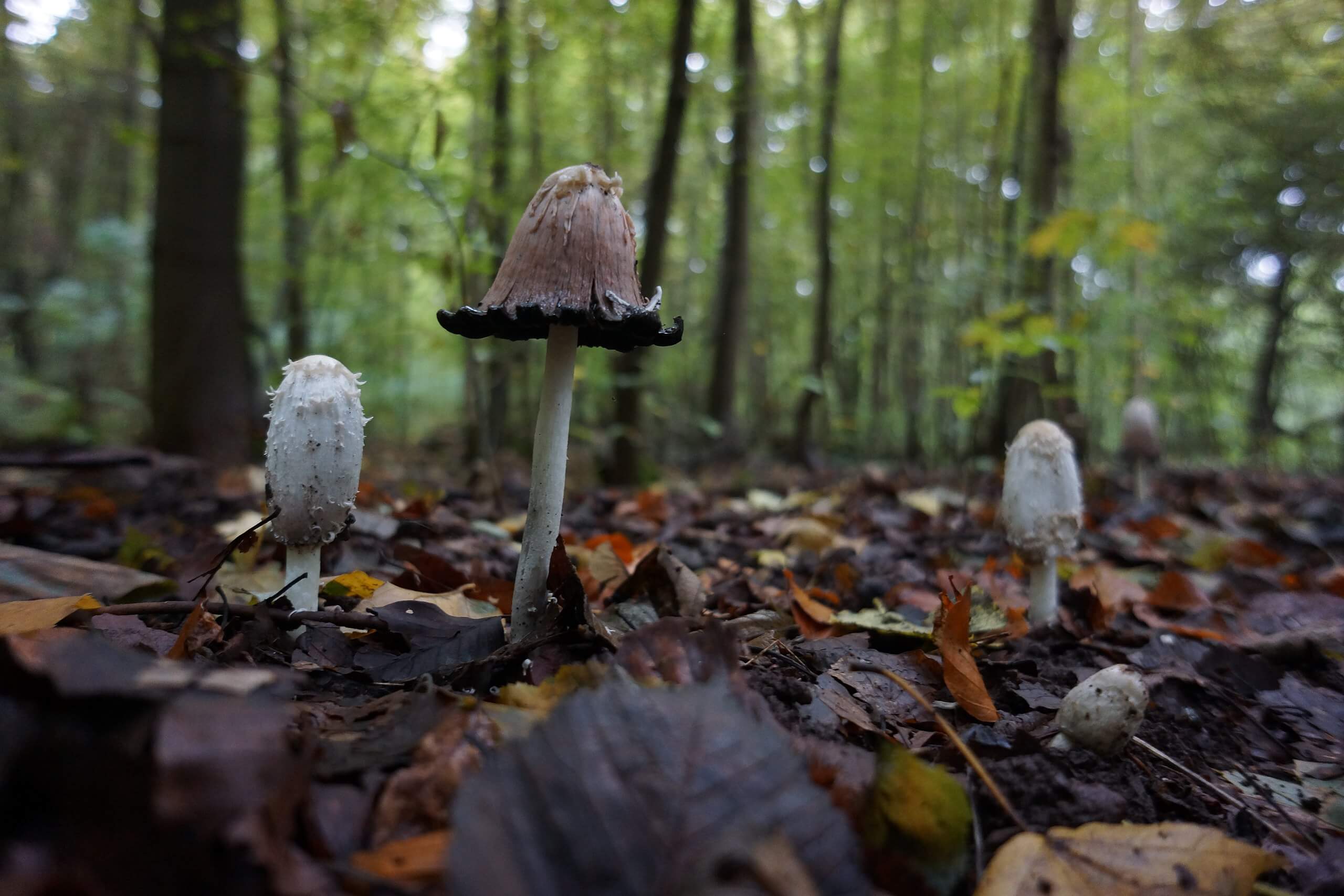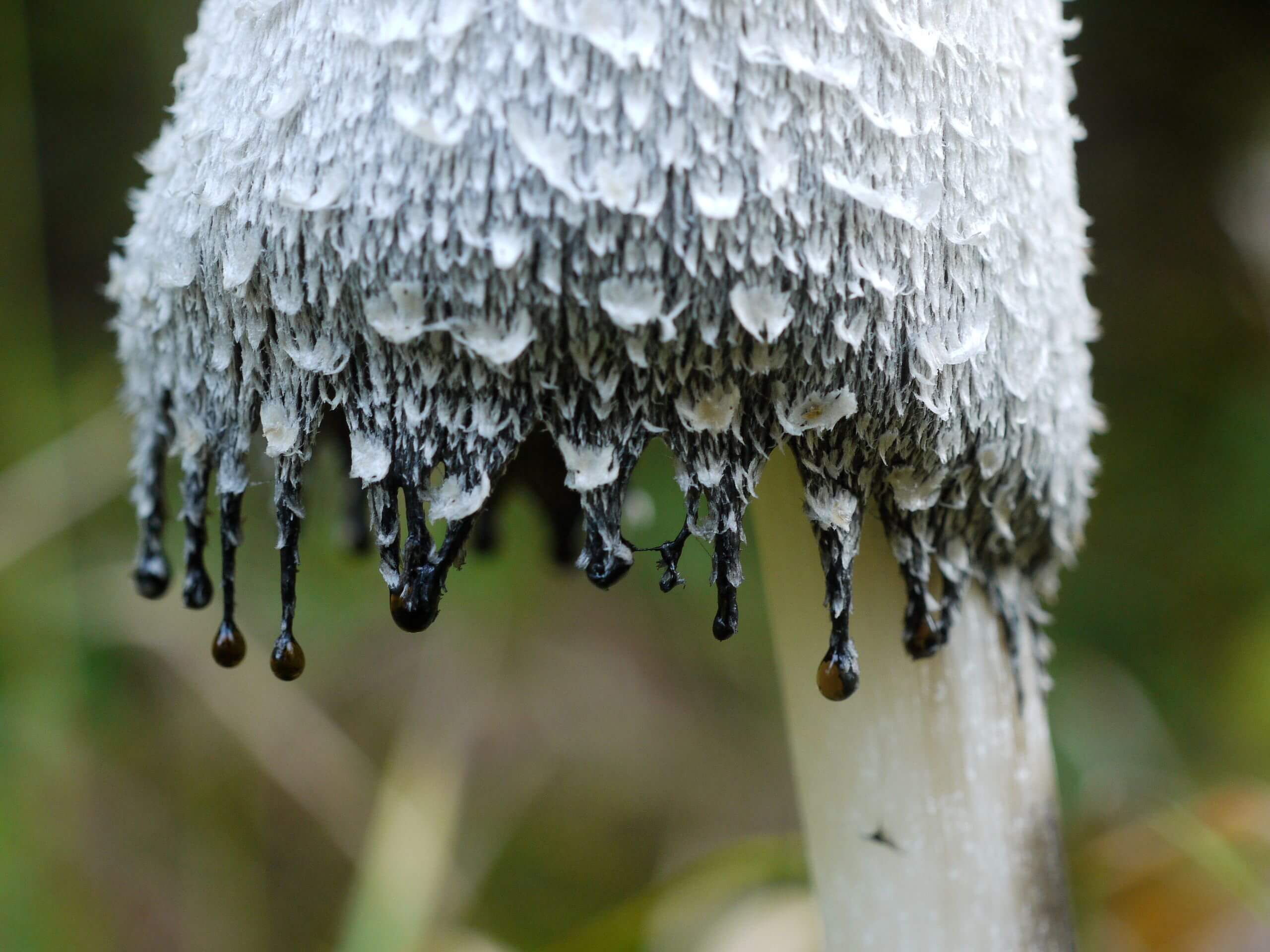The shaggy mane mushroom (Coprinus comatus) is a brilliant wild edible. Often known as the shaggy ink cap or lawyers wig, it’s a fairly common mushroom that appears in a variety of habitats. From front lawns and urban parks, to the depths of forests and woodland. Any areas of disturbed soil have the possibility of sprouting these characteristic mushrooms.
They’re a great species to forage as they are generally easy to identify. But as with any mushroom species, accurate identification is always essential.

Cautions: Lookalikes and Warnings
Take care not to confuse the shaggy mane mushroom with the common ink cap mushroom (Coprinopsis atramentaria). With their similar name, and similar appearance when young, it’s important to correctly identify the specimen you’re about to harvest. Thankfully common ink cap mushrooms are edible too, however they come with an additional warning. These mushrooms must never be consumed at the same time as alcohol. It is even recommended to avoid alcohol for up to 3 days after eating any common ink cap mushrooms.

This is due to a reaction between the alcohol and the ‘coprine’ chemical found within common ink caps. They interact and cause a syndrome which can make you highly sensitive to alcohol. Reactions range from a flushed red face and severe nausea, to strong heart palpitations and in severe cases, even a heart attack. Because of this common ink cap also earned the name ‘tipplers bane’.
Another slightly similar lookalike could be the Magpie fungus (Coprinopsis picacea), which is poisonous. It’s also a member of the ink cap family. However this species lacks the distinctive peeled, and shaggy look of the shaggy mane mushroom, and is also not generally found in North America, only Europe and Australia.
The shaggy mane mushroom could also be confused with the similarly named lions mane mushroom (Hericium erinaceus). Both are perfectly edible, and there is a substantial difference in appearance.
How to Identify a Shaggy Mane Mushroom
As their name suggests, the shaggy mane mushroom has a characteristic cap that allows it to be easily identified. As a wild mushroom, they are among one of the most easily distinguishable, edible species.

It is important to note however that when young, both the shaggy mane mushroom and common ink cap appear similar when they first emerge from the soil. They both have a long, elongated cylindrical shape, before soon fanning out into a more recognisable cap. As the cap forms, you can then easily identify a shaggy mane mushroom by its rough ‘shaggy’ looking scales. It resembles the look of peeling wallpaper, or as it’s other name suggests, it can resemble the layered curls of a ‘lawyers wig’. They really are quite distinctive.
The gills are another characteristic which should help you to identify a shaggy mane mushroom. They start off white, then turn pink, before soon turning black as the mushroom matures. They then begin to secrete an inky black ooze which contains the spores.
Another characteristic is that generally shaggy mane mushrooms grow in much smaller groups than the ink cap mushroom. However this can not always be relied upon.
History of Shaggy Mane Mushrooms
The deep black ink that exudes from shaggy mane mushrooms was once thought to have been used as an ink substitute. It has a deep black coloring, so it’s definitely recommended to avoid placing these mushrooms in a shirt pocket if you’re out foraging!
Foraging for Shaggy Mane Mushrooms
These mushrooms are highly unlikely to be found in grocery stories or farmers markets. This is because when picked, the mushroom quickly turns into a black ball of dripping goo. This process happens within a matter of hours, so they would generally not be able to make it onto shop shelves in time. It’s a member of the ink cap family, which has the particular characteristic of not keeping well when harvested and picked.
Look for them around piles of wood chip, meadows, rough compacted terrain, the edges of dirt roads and even simply within a lawn. They grow from summer through until fall, and appear most frequently after rain when the ground is moist.

Be as gentle as possible when harvesting the mushrooms as the flesh can be extremely delicate. The inky black substance will soon get onto your hands, so it’s often recommended to wear gloves to stop the substance transferring into clothes.
Older mushrooms will often be surrounded by a substantial amount of this inky substance, so avoid these and pick only the newly developed mushrooms. To delay their deterioration, it is best to add them straight into the refrigerator when you return home and cook them as soon as possible!
Eating Shaggy Mane Mushrooms
Young mushrooms should be picked, prepared and on the table quickly. Shaggy mane mushrooms are notorious for quickly deteriorating and turning black and completely losing their form. Also, once these black areas begin to appear the taste of the mushroom can often quickly decline, making them a bitter an undesirable ingredient!
They would be a perfect addition to soups, risottos or meals that require a rich tasting, mushroomy stock. They’re often added to dishes specifically for their dramatic inky coloring too, whether a risotto or pasta dish!
Did You Know…
The shaggy mane mushroom actually begins to auto digest its cap and gills after being picked. Enzymes that digest chitin (a component which adds structure to mushroom cell walls) begin to break down the flesh of the mushroom. This is thought to help the release and distribution of its spores, which are contained in the inky goo it turns into. You can read more about the incredible scientific process of how this occurs here!

Shaggy mane mushrooms are a fascinating fungus. With their characteristic shaggy caps and exceptionally quick expiry time, they make for an interesting foraging experience. Why not try locating some on your next late summer walk, and see if you can rustle up a dramatic looking mushroom risotto!
—————Written by Hannah Sweet
Hannah is a freelance writer and graphic designer from the UK. With a penchant for travelling, photography and all things botanical, she enjoys writing about a wealth of topics and issues, from conservation and slow living, to design and travel. Learn more about her writing and design services at www.sweetmeanders.co
Many of our readers find that subscribing to Eat The Planet is the best way to make sure they don't miss any of our valuable information about wild edibles.
See our privacy policy for more information about ads on this site







5 Responses
So when I cooked the mushrooms it oozed a red looking liquid. Will I die?
Sir, are you ok? (11/10/22)
Did you die?
Did you get superpowers?
Sir, we have launched an investigation into your wellbeing as we are all greatly concerned. Please respond if you are still alive.